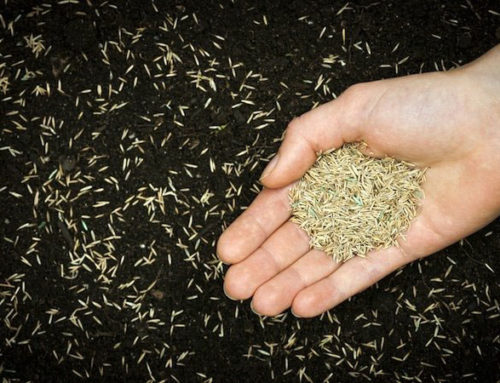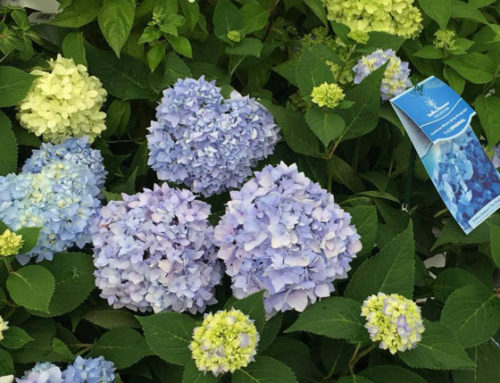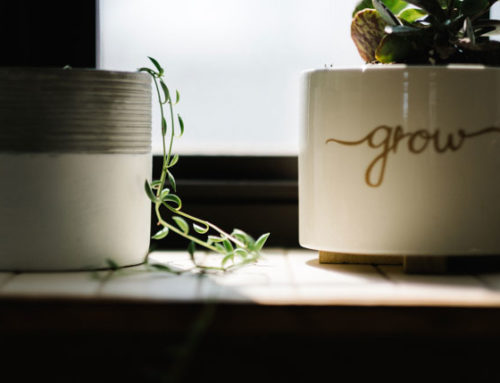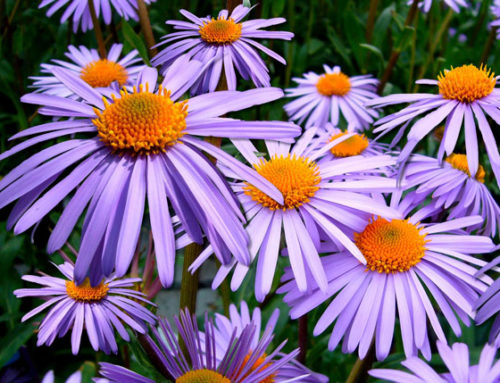
Your first step is to determine if you live in a location where your citrus trees can be planted outside in your yard. Fo r most of the country, your new citrus plants will best be grown in a container. If you live above zone Sb, or if frost is even a remote possibility, you will want to grow your citrus trees in a container and bring them indoors during the winter. Your young tree will need excellent drainage and lot s of sunshine no matter where you plant it. So, only select pots that have drainage holes in the botto1n for colder regional growing success.
Growing Citrus Trees in Containers
Selecting the Right Pot
To succeed at growing live plants, it doesn’t matter if the container is made of plastic, clay, metal or wood, it must have adequate bottom drainage holes. Don’t worry about potted soil escaping. Just buy a water tray and place a fine meshed screen or weed barrier cloth on the bottom before planting. The layer of porous material allows water to leave while keeping the potting soil in your container .
Consider the mobility you will need when selecting your citrus tree’s container. Whatever you choose will weigh far more filled with your tree, potting soil and drainage gravel. Clay and ceramic containers are a lot heavier than plastic. Resin and wood containers will be far easier to move around in the house and into the outdoors during summer.
Don’t start off with a small tree in a huge pot, thinking it will be economical . Too much soil-less medium surrounding the citrus plant’s roots will bring you high moisture health issues.
Correct Citrus Tree Potting Method
With your weed barrier or screen in place at the bottom of your pot, lay in an inch or two of pea gravel for proper drainage. Next, you will need to get your potting medium right. Not all commercial mixes found at your store will be okay. Most of these products are predominantly sphagnum peat, which is highly acidic and inappropriate for the longevity of many plants … especially citrus. Do not use ordinary top soil in any container planting; it will quickly kill the contents of your pot.
Select an easy to obtain soil-less potting medium that contains either vermiculite or perlite. Blend in some cedar shavings with your potting medium for even distribution . Fill the planter partially and you are ready to inspect the citrus tree’ s root system. Any plant grown in a container will become somewhat root bound, a condition that should be dealt with whenever you transfer them to a larger container. You can easily correct the situation by carefully spreading the larger roots, allowing them to grow outward instead of continuing to grow in the same tight circle. Be sure to loosen the remaining outer roots to help them escape from their previously cramped condition.
Situate the tree in your partially filled container . Maintain the same surface level of potting soil as it was growing in the original nursery pot. Complete the process of filling around your root ball. Be sure to leave watering depth, from the rim of the pot to the soil surface, of 1/4 to 1/2 inch. Don’t fertilize until you see new growth appearing , just as is done in outdoor growing of citrus trees. After watering your newly potted tree thoroughly, you have finished your planting.
Sunlight Exposure
Most fruit crops do best in full sun, but some will do well in partial shade. As with anything that flowers the more hour s of sun each day, the heavier the blooming. Without flowers fruit cannot form. This controls how big your harvest will be at the end of your citrus tree’s cycle. Over the winter, you will want to house your tree in front of the sunniest window you have. Once all threat of frost is over, you can move your citrus tree outdoors into a spot where it will get at least 8 hours of sun every day.
Any plant kept indoors over the cold season must be slowly adjusted to the intense light. Consider how you experience the instant introduction to brilliant light after being in the dark for a long time. Prepare citrus trees for full sun placement by alternating shade and sun exposure, adding an hour every few day. Begin an hour on day one. To prevent shock, start the process 2 weeks before the full time move. The same 1s true of prepar1ng citrus trees for being moved back indoors for winter. Whichever direction you are headed with light acclimation, you’ll want to slowly change from direct sun exposure or part shade exposure.
Temperature
Tropical and subtropical fruit trees cannot tolerate freezing temperatures. Some will suffer ”die-back” only on the youngest twigs, while others will die back to the ground. Being without insulation, and completely exposed to frigid temperatures, is something only very cold hardy plants can endure. Just moving them inside is not total protection from icy drafts. Always place your potted citrus tree where cold blasts from opening exterior doors and the heating system vent cannot hit them.
You must pay attention to the cooling night temperatures. It would be best to start the process when nighttime temperatures begin dipping into the high 40s. Also keep watch for unexpected frost. You can always move the tree inside for the night, and go back to light acclimation, after the frost has melted. The time this will happen is all dependent on how far north you live.
Water Right for Best Results
The most common reason people fail at growing plants in containers is either not enough or too much water, whether caused by a lack of drainage or watering too often. You should only water as needed, especially with citrus trees. Clay and wood containers will dry faster than plastic, metal and ceramic because air can enter the walls of these pots. This is why you should never use real soil with a tree in a container.
Always check your potting soil for dryness watering; you want the surface to be very dry to the touch. The light consistency of soil-less medium makes it float away when a rush of heavy water presents itself so be sure to slowly add the water to your pot, and avoid exposing the citrus tree’s roots to the air. Empty the pot’s water tray if it starts filling up. Good drainage isn’t happening if the bottom drainage holes are submerged in deep water. Cooler temperatures always slow the growth and water needs of citrus trees.
While the roots pref er to stay on the dry side, citrus leaves love humidity. Indoor Citrus will do best if misted daily especially when you are running your heat during cooler months. You can also use a humidifier or fill your pot’s saucer with rocks and add water; place your plant on the rocks ensuring the bottom of the pot is above the water line.
Fertilizing Container Grown Citrus Trees
An excellent, balanced fertilizer schedule is highly important to your success in receiving an abundant harvest from vigorous container-grown citrus trees. Over fertilization can result in too much foliage growth, poor fruit production, and die-back. Use organic fertilizer blended for the needs of citrus trees, like Citrus-tone or Dr. Earth’s Organic 9, and follow the directions on the label for container-grown plants. When the mature foliage on your citrus trees is deep, rich green, you know you have the correct fertilizer application.
Citrus trees don’t do well in saline soils. If a white crust forms on the potting soil surface, it is likely due to excess fertilizing and/or your water has large amounts of soluble salts. This situation should be corrected by washing the trapped salts out of the container by slowly running water through the container for several minutes. This will carry the excess salts down through the potting medium to exit via the drainage holes.
Pruning
Citrus trees grown outdoors are always naturally dense with a lovely full shape. When growing citrus plants indoors, the weaker light in winter can cause them to become leggy. Pruning back the tree’s canopy partially will induce more branching to assist you in producing a fuller tree and more fruit. You can also control the amount of space the citrus tree starts to take up in the house as it matures by pruning. When the top of your citrus tree have outgrown the available root space in the container, it is normal to see falling leaves and young twig die-back.






